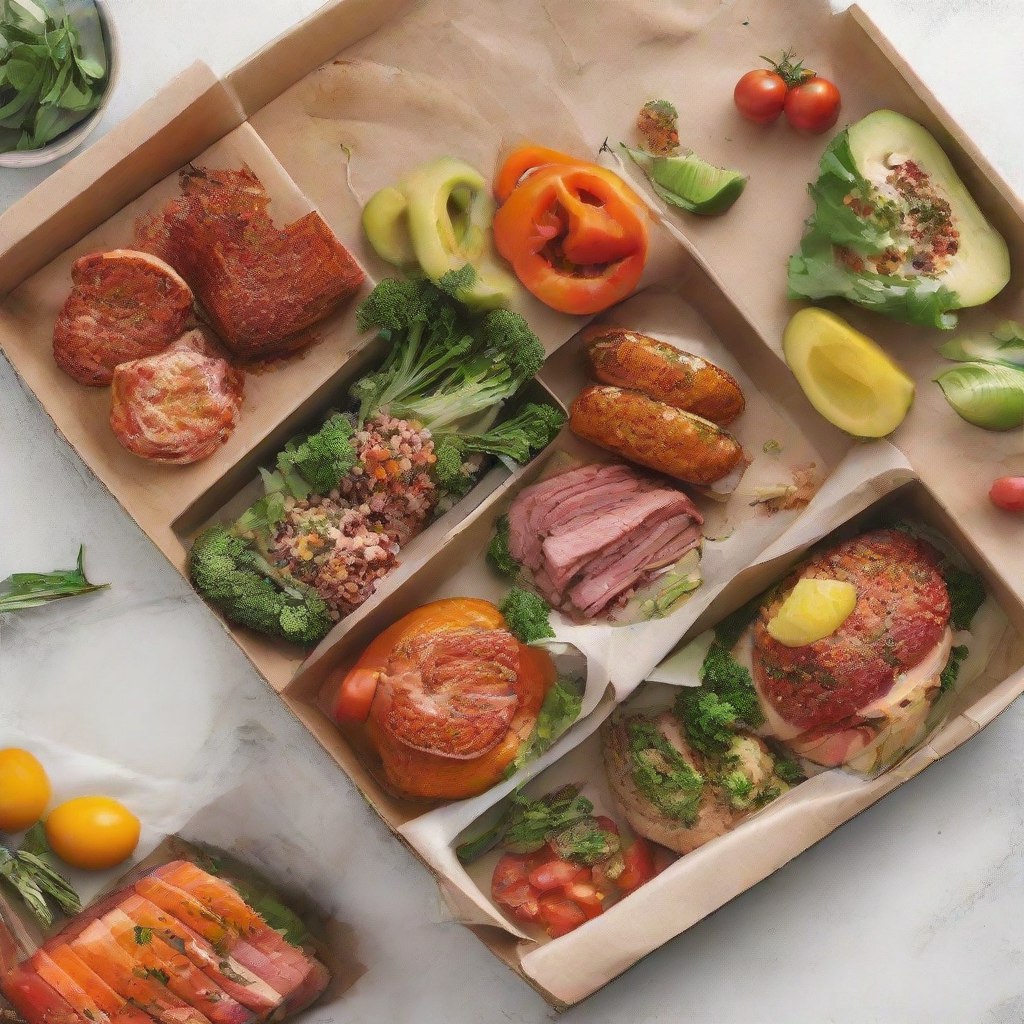Are you tired of the hassle of meal planning and grocery shopping? Do you want to enjoy delicious, home-cooked meals without the stress of recipe hunting and ingredient sourcing? If so, starting your own meal kit delivery service might be the perfect entrepreneurial venture for you. In this comprehensive guide, we’ll walk you through the step-by-step process of launching a meal kit delivery service, from recipe development to customer delivery, and everything in between. Get ready to revolutionize the way people cook and eat with your convenient and delicious meal kits!
Getting Started
Understand the Concept
Before diving into the world of meal kit delivery, it’s essential to understand the concept and how it works. Meal kit delivery services provide customers with pre-portioned ingredients and step-by-step recipes to prepare home-cooked meals quickly and easily. These services appeal to busy individuals and families who want to enjoy the convenience of meal delivery without sacrificing the joy of cooking and the satisfaction of preparing meals from scratch. By offering fresh, high-quality ingredients and chef-inspired recipes, you can provide customers with a convenient and enjoyable cooking experience.
Research the Market
Once you’ve grasped the concept of meal kit delivery, it’s time to research the market and identify opportunities for your business. Explore existing meal kit delivery services to understand their offerings, pricing, and target demographics. Identify gaps or underserved niches in the market that you can capitalize on with your unique value proposition. Consider factors such as dietary preferences, cuisine styles, and delivery options when defining your target audience and positioning your service in the market. Conduct surveys or interviews with potential customers to gather feedback and validate your business idea before moving forward.
Develop Your Business Plan
With a solid understanding of the market, it’s time to develop a comprehensive business plan for your meal kit delivery service. Define your business objectives, mission statement, and core values to guide your decision-making and operations. Outline your product offerings, pricing strategy, and revenue projections based on market research and industry trends. Identify key partners, suppliers, and distribution channels to support your business operations. Consider logistics such as packaging, shipping, and delivery to ensure a seamless customer experience. By creating a detailed business plan, you can set clear goals and benchmarks for your meal kit delivery service and position it for success in the competitive food industry.
Recipe Development
Craft Delicious Recipes
The heart of any meal kit delivery service is its recipes. Spend time developing a diverse and enticing menu of recipes that appeal to your target audience’s tastes and preferences. Experiment with different cuisines, flavor profiles, and dietary restrictions to offer a variety of options for your customers. Focus on using fresh, seasonal ingredients that are readily available and affordable. Consider partnering with chefs, nutritionists, or food bloggers to create unique and innovative recipes that set your meal kits apart from the competition. Test your recipes rigorously to ensure they are easy to follow, delicious to eat, and yield consistent results.
Source Quality Ingredients
Once you’ve finalized your recipes, it’s time to source the ingredients for your meal kits. Partner with local farmers, producers, and suppliers to source fresh, high-quality ingredients for your recipes. Consider factors such as seasonality, sustainability, and traceability when selecting ingredients to ensure the highest standards of quality and freshness. Build relationships with your suppliers and negotiate pricing, delivery schedules, and terms to optimize your supply chain and minimize costs. Conduct regular quality control checks to ensure that your ingredients meet your specifications and maintain their freshness and integrity throughout the delivery process.
Portion and Package Ingredients
With your recipes and ingredients in hand, it’s time to portion and package them into meal kits for delivery. Invest in high-quality packaging materials such as insulated boxes, ice packs, and eco-friendly containers to preserve the freshness and quality of your ingredients during transit. Carefully portion and package each ingredient according to your recipes, taking care to label and organize them for easy identification and assembly. Consider including branded recipe cards or cooking tips with each meal kit to enhance the customer experience and provide value-added content.
Operations and Logistics
Set Up Your Kitchen
Before you can start assembling meal kits, you’ll need a dedicated kitchen space to work in. Depending on the scale of your operation, you may choose to rent a commercial kitchen, lease a production facility, or convert your home kitchen into a certified food production space. Ensure that your kitchen complies with local health and safety regulations, including food handling, storage, and sanitation requirements. Invest in equipment such as refrigerators, freezers, prep tables, and cooking utensils to support your meal kit assembly process. Designate specific areas for ingredient storage, preparation, and packaging to optimize workflow and minimize cross-contamination.
Plan Your Production Schedule
To ensure a steady supply of fresh meal kits for your customers, it’s essential to plan your production schedule carefully. Create a production calendar that outlines your recipe rotation, ingredient sourcing, and meal kit assembly schedule based on customer demand and delivery frequency. Coordinate with your suppliers to ensure that you have a sufficient supply of ingredients on hand to meet production needs. Schedule production shifts and staffing levels accordingly to maximize efficiency and productivity. Monitor production output and adjust your schedule as needed to accommodate changes in demand or seasonal fluctuations.
Manage Inventory and Fulfillment
Effective inventory management is critical for maintaining product quality, minimizing waste, and fulfilling customer orders accurately and on time. Implement inventory tracking systems and processes to monitor ingredient levels, track usage, and replenish stock as needed. Use forecasting tools and historical data to anticipate demand and adjust inventory levels accordingly. Coordinate with your packaging and fulfillment teams to ensure that meal kits are assembled, packed, and shipped according to customer orders and delivery schedules. Streamline order fulfillment processes to minimize errors and delays and provide customers with a seamless ordering and delivery experience.
Marketing and Sales
Build Your Brand Identity
As you prepare to launch your meal kit delivery service, focus on building a strong brand identity that resonates with your target audience. Develop a compelling brand story, visual identity, and messaging that reflects your values, mission, and commitment to quality. Create a professional logo, website, and marketing materials that convey your brand’s personality and differentiate it from competitors. Use social media, email marketing, and content marketing to engage with your audience, showcase your recipes, and generate excitement around your launch. Invest in professional food photography and videography to highlight your meal kits and entice customers to place orders.
Launch Your Website and Online Store
Your website serves as the primary storefront for your meal kit delivery service, so it’s essential to make a strong first impression. Invest in a user-friendly website design that is easy to navigate, visually appealing, and optimized for mobile devices. Create an intuitive online ordering system that allows customers to browse your menu, select their desired meal kits, and place orders seamlessly. Incorporate features such as customer reviews, testimonials, and FAQs to build trust and credibility with potential customers. Implement secure payment processing and shipping options to facilitate smooth transactions and ensure a positive shopping experience.
Promote Your Service
Once your website is live, it’s time to promote


